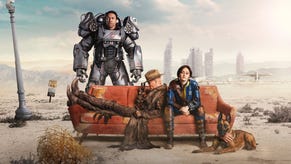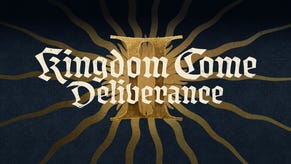Interview, part 1: Crackdown 2 design boss and producer on Pacific City's future
Xbox 360 has several legendary exclusives, but Crackdown is the most enigmatic. Relaying a comedic, near-future dystopia through mob boss murder and an open, island city, the RealTime Worlds title was, for many, the first true HD 360 experience. Assuming the role of an Agent, the player's task was simple: reclaim the streets while avoiding civilian-vapourisation. Pacific City's sandbox, drop-in co-op, physics-based action and the ludicrous, all-American VO secured Crackdown a rightful place in the hardcore's heart.
A second game was not inevitable. Microsoft got cold feet after the original "only" sold 1.5 million, and RealTime Worlds moved onto APB. Braying fans got their wish, though, when staffers split away from RTW to form Ruffian in December 2008 and started work on what was announced at E3 2009 as a full sequel. The wrangling's well-documented. The game's more important.
We were lucky enough to visit Ruffian in Dundee last month. The two builds we saw showed enough to confirm that Pacific City's undergone some huge changes. While the sequel's set on the same map, we're now in a post-apocalyptic setting. The Agency gained control at the end of the original, then quickly lost it. A civilian splinter group called the Cell, effectively a terrorist organisation, is calling the shots. The Agency is playing a weak third in the power stakes to the Cell and the Freaks, the mutants that appear near the end of Crackdown.
We'll wrap up all the detail in a feature tomorrow. In short, it feels like Mad Max on brick-dust smack; it's got four-way co-op for the entire campaign; nine huge, completely new, underground areas with an "underworld population"; co-op vehicles; new types of orbs; a new hand-to-hand fighting system; fully-featured multiplayer, including modes like Rocket Tag; it'll be locked at 30fps; Skills are now limited to five levels; and nope, there's no release date.
Check back in the morning for the preview and play impressions. For now, though, hit the link for our massive interview with Ruffian's creative director, Billy Thomson, and the game's producer, James Cope. We've put this up in two parts: get the second bit here. There are new screens here.
Interview by Patrick Garratt.
VG247: The obvious one, as far as I'm concerned: there was no real reason in the in the first game to beef up your car powers, and loads of people finished without ever attending to them. What are you doing in the second game to make sure they work properly?
Billy Thomson: To make sure people actually use cars?
Yeah.
Billy Thomson: Well, the cars we're putting in have a co-op slant to them as well. A lot of the weapons you'll see in the game have got turreted weapons that are bigger and more powerful, and they can be strapped up onto certain vehicles. Some vehicles can carry up to three of four different turrets as well, so we're pushing the co-op nature in that respect. We're also putting in more systems for gaining driving skill as well. So rather than just running people over all the time, which was nothing short of a pain in the arse in the first game, we're making sure that stuff you do in the cars is actually fun and provide skills for the player as well. It's small things like that, as well as providing more gameplay modes for players.
A major point of the sequel is that the city isn't "normal" any more. A huge part of the first game, really the crux of the first game, was that you were a bonkers policeman with the ability to kill whoever you wanted and people just slapped you on the wrist. It was the crux of the humour. How is the humour going to work in the sequel if you've removed that elemnent?
Billy Thomson: We've not taken it out.
Right.
Billy Thomson: It's just less likely to happen as frequently as it did in the first game, purely based on numbers. Because what we've done, as you rightly mentioned, is a flip, where the mass numbers of AI you'll see will be the enemies, the Freaks at night. But that's not going to be a case of not having civilians during the day. You'll still have civilians wandering around. They'll be doing their thing with different ambient events that you'll see in the city. That'll still be there, and you'll still get the slap on the wrist from the VAO. We've tried to maintain the humour, and if anything we've tried to push it forwards as well. It's not that it's gone, it just won't be thousands and thousands and thousands of civilians that you're ploughing through this time. It'll be bad guys rather than good guys.
So you've still got people saying to you, "That's the spirit?"
Billy Thomson: [Laughs] It'll still be in there, yeah.
We really didn't see much of the missions this morning. Mainly, you were showing of the sandbox elements. How are you going to the narrative into the sandbox elements? Obviously, in the first one, it wasn't actually that successful, and the popularity basically came from the fact it was a toy. How are you going to bring the story forward?
Billy Thomson: Well, there are different ways. We've got video we can play in-game, but one thing we're not going to do is interrupt the player at any point. With the first game, we spent a long time in various meetings going through different possibilities on how we could convey information to the player in a way that they saw it, understood what it was and it came at a good time; I don't think we got it right, personally. It constantly came up at the wrong time, and because it came up at the wrong time, all you wanted to do was skip it, and the information that was in there wasn't that important anyway, really. So this time we wanted to make sure that if the player does get to a point in the structure where information is there and we want the player to see it, we'll make sure that they can go back and view it again in the UI.
But, there's almost a multi-thread to the information, to the stories we want to tell. So it's not just one: it's multiple characters in different threads that'll tell different parts of the story, and it's up to the player to find these parts of the story. You've got a core storyline, but you'lve also got bits that are almost like flavouring all around it. If you can find those things in the game, then that'll provide a more rounded understanding of what Pacific City is, and exactly of what happened, how the city fell into the hands of the Cell, and how the Freaks took hold of the city. All those things unfold as the player plays the game, but they'll not be forced on the player. The only things that'll be pushed on the player will be based on the player's progression through the game, so the story is more reactive. It's not pressed on the player. The player does something, they get a bit of information. It's more like that mechanic.
You've got four-way co-op throughout the entire campaign.
Billy Thomson: Yeah.
Doesn't that present a major design challenge? Surely you're going to go through each of the missions very quickly with four players, but it could take literally four times longer with one player and it could be an awful lot more difficult. Is the game much faster with four players?
Billy Thomson: The honest answer is "yes."
Right.
Billy Thomson: The very quick answer is "yes". We had two choices. We could have gone for dynamic balancing of the AI, which I think causes a lot of problems. Think of this scenario: you're standing at a corner, and you've got three guys round the corner, and you've got an Uzi. You run round the corner and mow the guys down, and you take very little damage. Now, if we did dynamic balancing, and you add three more players to that game, and you run around another corner and meet the exact same three AI and we've upped their health and upped their damage, then your experience from corner to corner is going to be completely different.
So what you've just taught the player – that you can just take down three guys in an instant and not need to worry about health – you've just changed at the next corner. I think that's a big issue. So we've gone in a slightly different direction, which is to allow to player to balance the difficulty themselves.
If they've played through the game, and now they're playing with three other friends and they're finding it too easy, they can very easily ramp the difficulty up, to get something that they feel is more akin to their level of experience and their level of ability.
But what we will do is balance the game so it's something that's easy for one player to play through. It will be based on one player, and more players make lighter work, essentially, and it's up to the player if they want to ramp that difficulty right up. While it is a Live title, people will play it on their own as well, and we need to make sure that we get the balance right for those people that play on their own. If more people join in, they can just ramp the difficulty for themselves or they can just fly through the game and do a speed-run. It's giving the player the freedom to make their own decisions.
James Cope: Also, players think that co-op's a way of making the game easier anyway. In the first game, people had a particular challenges they couldn't achieve on their own, and they got in other players to help achieve them, and that's something we're going to try to maintain anyway. In a freeform experience, if you have more players it makes it easier. That's our reputation, so we're just playing to that basically.
Billy Thomson: I personally preferred the first game on Psychotic. I think it's a better way of playing it. It makes you think about situations. You pick them off, or you're dead. I'll definitely make a point in the sequel of being able to ramp up the difficulty to it's hard with four players and you really do feel challenged, but it'll be down to the player to decide whether or not they want to be able to play it on that level.
You've got an eight-player "against the Freaks" mode in it. Do you think that was necessary from an aesthetic perspective, or is it basically a reaction to Firefight and Horde?
Billy Thomson: It's definitely not a reaction. It was an idea that was thrown around that sounded really cool. Maybe somebody else is doing it. I don't know if anybody else is doing anything like that right now. It just sounded like a great idea, and something that was a challenge for us to try to achieve. I think if we get it right it could work really, really well. It's definitely not a reaction, because I wasn't thinking of those game modes when the idea was presented.
James Cope: A lot of us here are big fans of games like Robotron, and we wanted to have that kind of Smash TV experience in Crackdown. Mass AI against a few players is incredibly good fun. Having that arena-based thing, we think, is going to be a fantastic feature. But we appreciate that it is a good idea, so other people are doing it as well [laughs].
Hit this for part 2.
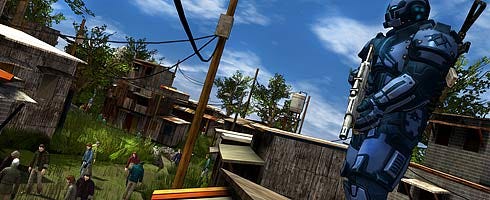



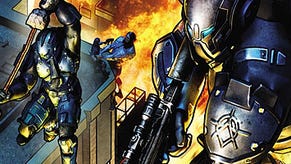
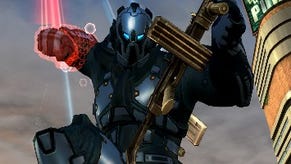
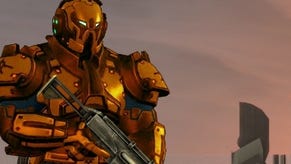



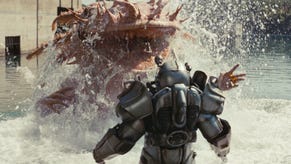



.jpg?width=291&height=164&fit=crop&quality=80&format=jpg&auto=webp)
